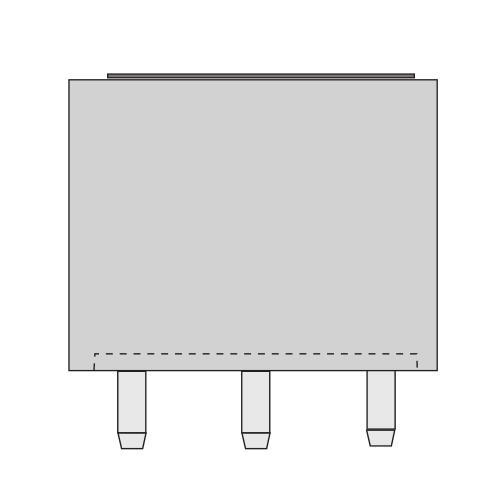3 Electrode Minature Chlorine Sensor (CL2 Sensor)
-
Price
Price on request ≥1piece
-
Model Number
4CL CiTiceL -
Data Sheet
-
Package
Original packaging -
Specs
4CL CiTiceL -
Quantity
- +Send Inquiry
Product Description
4CL CiTiceL Chlorine Sensor (CL2 Sensor) Key Features & Benefits:
• Industry leading reliability
• Improved performance variability
4CL CiTiceL Chlorine Sensor (CL2 Sensor) Technical Specifications
* Specifications are valid at 20°C, 50% RH and 1013 mBar, using City Technology recommended circuitry. Performance characteristics outline the performance of sensors supplied within the first 3 months. Output signal can drift below the lower limit over time.
Poisoning
CiTiceLs are designed for operation in a wide range of environments and harsh conditions. However, it is important that exposure to high concentrations of solvent vapours is avoided, both during storage, fitting into instruments, and operation.
When using sensors with printed circuit boards (PCBs), degreasing agents should be used before the sensor is fitted. Do not glue directly on or near the CiTiceL as the solvent may cause crazing of the plastic.
• Industry leading reliability
• Improved performance variability
4CL CiTiceL Chlorine Sensor (CL2 Sensor) Technical Specifications
| MEASUREMENT | |
| Technology | 3-electrode electrochemical |
| Measurement Range | 0-10 ppm Cl2 |
| Maximum Overload | 100 ppm Cl2 |
| Resolution (Electronics dependent) | 0.1 ppm |
|
Filter |
None |
|
Sensitivity* |
0.60 ± 0.15 µA/ppm |
| Response Time (T90)* | < 60 seconds |
| Baseline Offset (clean air)* | -0.2 to +0.2 ppm equivalent |
|
Zero Shift (+20°C to +40°C) |
< 0.2 ppm equivalent |
|
Repeatability |
2% of signal |
|
Linearity |
Linear |
|
|
|
| ELECTRICAL | |
| Recommended Load Resistor | 33 Ω |
|
Bias Voltage |
Not required |
|
|
|
| MECHANICAL | |
| Casing Material | ABS |
| Weight | 5g (approx.) |
| Orientation | Any |
|
|
|
| ENVIRONMENTAL | |
| Operating Temperature Range | -20°C to +50°C |
|
Operating Pressure Range
|
1 atm ± 10% |
| Operating Humidity Range | 15% to 90% RH non-condensing |
|
|
|
| LIFETIME | |
| Long Term Output Drift | < 2% signal drift / month |
| Recommended Storage Temp | 0 to 20°C |
| Expected Operating Life | 2 years in air |
| Storage Life |
6 months in sealed container |
* Specifications are valid at 20°C, 50% RH and 1013 mBar, using City Technology recommended circuitry. Performance characteristics outline the performance of sensors supplied within the first 3 months. Output signal can drift below the lower limit over time.
Poisoning
CiTiceLs are designed for operation in a wide range of environments and harsh conditions. However, it is important that exposure to high concentrations of solvent vapours is avoided, both during storage, fitting into instruments, and operation.
When using sensors with printed circuit boards (PCBs), degreasing agents should be used before the sensor is fitted. Do not glue directly on or near the CiTiceL as the solvent may cause crazing of the plastic.


